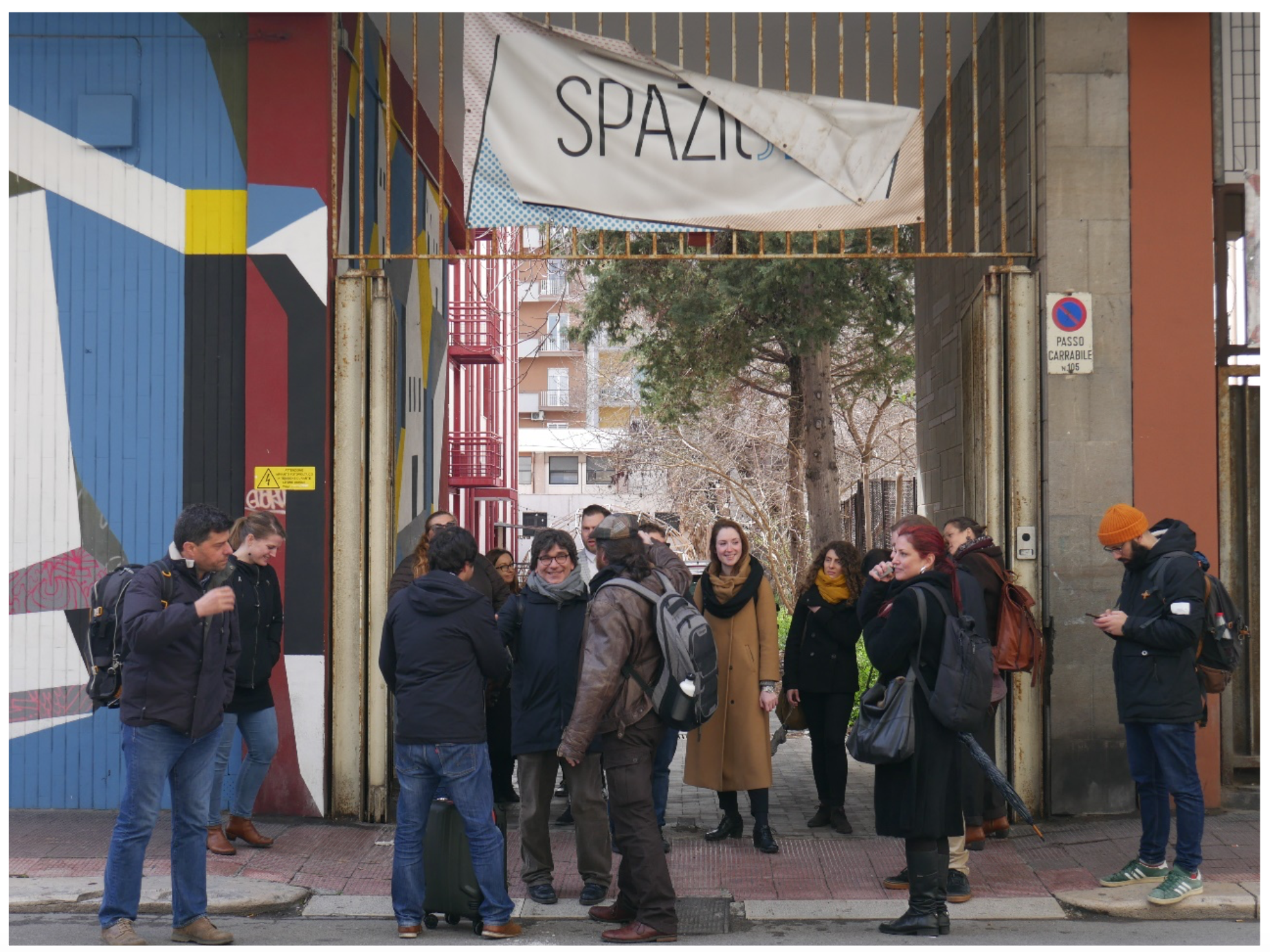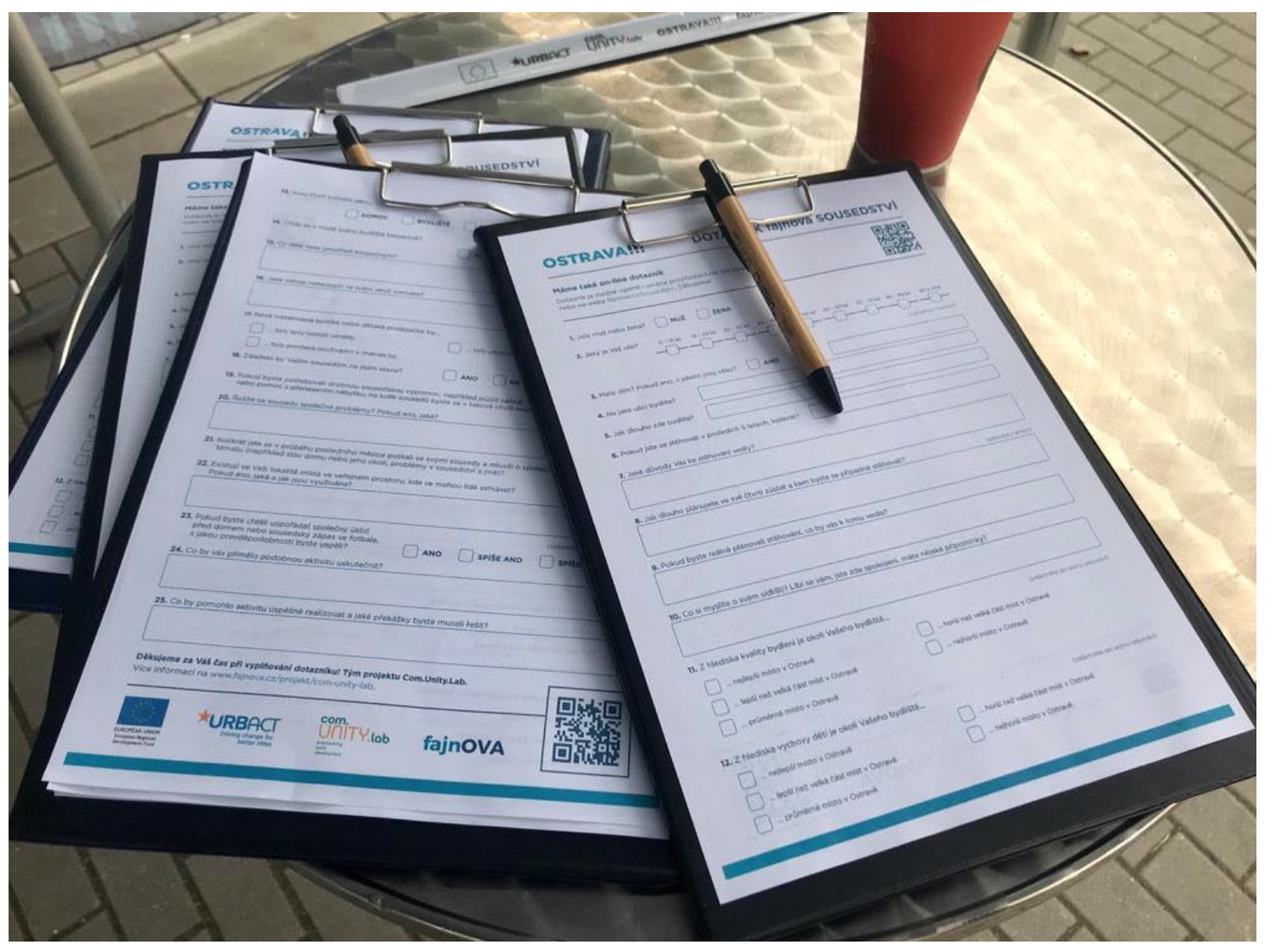Ostrava plan to reduce anonymity and strengthen communities in priority neighbourhoods
Edited on
14 April 2021Czech word „Sídliště“ [seed:lish:tje] is primarily used to define neighbourhoods with high-rise or large housing estates built during the communist era between 1940s and 1990s as an important part of building plans. The goal was to provide large quantities of fast and affordable housing and to slash costs by using uniform designs of prefabricated concrete blocks over the whole country.
Housing estates bear the legacy of socialist housing policy in terms of the social composition of the population and therefore a mix of different professions and social groups is preserved in housing estates. And even though, they are often said to be "mere dormitory communities with a few conveniences and even less character”, it is yet a common form of living for nearly 3 million Czechs.

Ostrava, the 3rd largest city of Czech Republic, turned into an industrial heart of Czech Republic soon after the discovery of extensive deposits of coal in the 2nd half of 18th century. The rise of
shafts and melting furnaces were accompanied with establishment of different types factories too and therefore the demand on housing for factory workers has grown up suddenly. The latest neighbourhood built under the socialist building policy is called Dubina accommodating 5,2% of Ostrava’s population.
In the last decade the quality of life in Dubina has been confronted by number of social, economic and urban issues leading to unhappiness of the residents. Following the Velvet Revolution in 1989, when the city sold the housing estate to their tenants for cheap prices and therefore majority of them are privately owned or have a private landlord and city administration has no control over the rent price or the quality. Dubina is nowadays less desirable location which causes the market value of flats to drop down making it difficult to sell for reasonable price in order to move elsewhere and on the other hand it opens opportunities for speculators to buy apartments for cheap price and rent high yet cheaper than in other parts of the city. Cheaper rents have an impact on the socioeconomic composition and residential instability. Residents are predominantly seniors, single parents’ or financially distressed families and Roma minority. Criminality related to substance use is quite also quite common here. As a result, some residents avoid leaving their flats after dawn and avoid contact with others. While anonymity deepens out, community life practically disappears from the neighbourhood.
Local authorities perceive the wide and complex problems in the area and realize that the appropriate actions must be taken before it is too late, but at the same time they understand that it will be a relatively long and costly process that needs to be planned very well.
Thanks to URBACT, Ostrava got the chance to become a part of the transfer network and participate on a deep study of Lisbon good practice focusing on urban challenges in socially deprived areas using integrated approach.
Lisbon’s good practice identifies around 67 priority areas in which approx. 150.000 inhabitants are living, a third of Lisbon’s population. Those priority areas address comparable challenges to some of Ostrava neighbourhoods in terms of high unemployment rate, insecurity, urban hygiene, lack of services, quality public space or poor accessibility. Their successful area-based approach, the so called “BIP/ZIP Strategy”, comprises of four tools: a map of the priority neighbourhoods and areas, a grant system for local NGOs, local taskforce to support the co-governance during the regeneration processes and a collaborative platform bringing city representatives and local stakeholders together. It is proven, that Lisbon was able to make a shift in residents’ lives by investing time and resources and not giving up on them.
The very moment, we had an opportunity to get to know the Lisbon story and the team that stays behind it was the Tallinn City Festival in 2017. The festival was aimed at European cities, which received a ‘Good practice city” award from URBACT program. That time, Ostrava received good practice for the implementation of the strategic plan using the strong participatory method. Later, we got to know that Lisbon has succeeded at the Transfer network call and was looking for more partners. After fulfilling the necessary criteria, Ostrava has proudly become a part of the com.UNITY.lab network.
The first major acquaintance with the good practice took place during the kick-off meeting held in Lisbon. It is true that until we experience things, we will find it difficult to understand them. During this meeting, we not only met the entire network for the first time and the Lisbon team, political representatives who have been pushing the whole strategy forward and the local stakeholders, we also visited two priority neighbourhoods that fall under the BIP / ZIP strategy and this was the point where we were able to materialize on all the information provided before and where we have literally charged with energy, enthusiasm and inspiration for our city.
 Upon return, we set up a local support group of carefully selected stakeholders, e.g. representatives of two local universities, experts in participation and organising events, non-profit representatives, social workers, representatives of school and sport facilities and local government. We used to meet as needed and, in a set, that suited the meeting topic.
Upon return, we set up a local support group of carefully selected stakeholders, e.g. representatives of two local universities, experts in participation and organising events, non-profit representatives, social workers, representatives of school and sport facilities and local government. We used to meet as needed and, in a set, that suited the meeting topic.
We also continued to meet internationally in approximately 3-month intervals. Each meeting was held in different partner city and at every instance, they fed us with new inspirations and knowledge related to urban development and kept us highly motivated. In Bari, we found local community project called SPAZIO 13 very interesting and immediately started to visualise something similar in Ostrava.
In Lublin, we watched with interest the openness of the local authority towards small community initiatives. In Aalborg, the way and the extent to which residents are involved in decision-making and how their suggestions are respected and taken into consideration by local authority and in Lille, the last meeting before the pandemic hit the world, we were interested in social project placed to a socially weaker area supporting the development and exchange of skills between local citizens, where time is the currency. All these, in fact, low key interventions can have strong impact on community well-being and that is the essence and the objective of our project and beyond.
A strategy integrating commonly used tools makes perfect sense and even “sounds” simple. Well, we though: “How difficult can it be to replicate?”
First, we map the territory of our city using Lisbon methodology and the areas that will emerge from the mapping will receive a priority in terms of allocating resources for urban redevelopment. Then we set the conditions of the grant scheme that can be applied only in the priority areas so that we not only support the ignition of new activities but also the creation of new partnerships and empowering community life in the neighbourhoods. To reduce the gap between residents and local authorities, task force can be established with clear mission focusing on implementation of an action plan through mediation and intense work with locals. Finally, a stakeholder platform to co-design and co-decide on necessary interventions reflecting on real needs of residents, while each entity represents one vote, including the local authority, is another step to regaining trust, however, the “one vote per entity” policy may sound rather as a wishful thinking.
All that is possible, if you have a strong political leader behind your plan, you have a clear vision, a dedicated team, available data and a sufficient budget. If you have all that up and ready, you can press the Start button and watch the progress. However, it proves impossible to manage it all during the life spam of the URBACT project. URBACT has an important role of the initiator and the tutor. The implementation is in the hands of the city itself.
Thanks to the participation in the project we understand the methodology behind the mapping process but soon after we realised that data that we can access are not up to date, regarding the Census 2011, data represent the entire district while we need to focus on a slice of pie and purchasing data can be costly unless you can create a task force for their collection. But the good news was, that the next Census is to be executed in 2021 and hopes to obtain up-to-date data rather than using those collected 10 years ago brought our hopes back.
We decided to simplify our mapping plan and perform on one location, in Dubina. The main objective was to set up a monitoring process which will allow local administration to observe and compare data continuously and thus their acquisition must be simple. In addition, we aimed to supply them with indicators based on perceptions of locals. In this instance, we used the Lisbon questionnaire as a template and adopted it to our needs. Our team of 5 – 6 people spent 3 days in the area targeting different respondents in person while the questionnaire was also available online and promoted through various communication channels. We managed to gather over 313 responses which were subsequently analysed and evaluated. We learnt number of interesting facts, for example:
- 53% of the resident’s state that there are no places in their neighbourhood (except pubs) where people can meet
- 48% of residents do not intent to move out in the future
- 54% of citizens do not address any common issues with their neighbours at all
- 68% of the population perceives another inhabitant / user of the neighbourhood as a source of danger
- The results are summarised in the report which takes the role of argumentative report for thee decision makers.

One or two examples of how URBACT has facilitated in helping the ‘transfer’ go to plan. Reflect about challenges when adapting solutions to context and how the URBACT Method is providing support and troubleshooting.
URBACT offers exchange of experience and know-how across the network and supports the production of local action or transfer plan. This concept is literally tailored for cities who struggle to solve persistent challenges on their own and seek solutions elsewhere. There is always the possibility of searching for success stories on the Internet, but it is not enough to replicate. Without a deep study on the implementation steps, without a knowledge of resources needed, without not fully understanding the obstacles or the legal environment. URBACT offers effective tools of transferring know-how from one city to another such as e.g. transnational meetings engaging project partners through innovative methods. As an example, the brainstorming over 4 pre-defined challenges using communication platform MIRO, gave us a new perspective on how to approach the problem.
At the local level, URBACT strongly encourages cities to create local support group composed from stakeholders, who have the same goal as city authority, to solve the problem, whether it is a personal interest because they live in the area or an interest of the institution they represent, in order not to provide an a top-down solution but to respond to real needs.
In addition, the programme also appoints lead expert to each project who assist the partnership over the entire duration of the network with both methods and tools for exchange and learning activities.

The participation in Com.Unity.Lab network was not the first occasion where the City of Ostrava used the support from URBACT. After two previous successful engagements in URBACT projects we knew that each project opens a Pandora Box and Com.Unity.Lab is not an exception. While focusing on a challenge addressed by the network, much broader problem comes to light. This seems to become a pattern. Focusing on improvement of community life in the neighbourhood we started to see how complex and deep problems the neighbourhood carries, and we managed. With close collaboration of district office, we managed to bring stronger attention to the entire area which is being transcript into the new district development plan. Besides testing tools transferred from Lisbon good practice such as grant scheme, task force, a mediator or establishment of collaborative platform, we understand that the infrastructural and urban redevelopment of the area is a necessity in order to regain trust of the locals.
Com.Unity.Lab is an URBACT Transfer Network dedicated to developing and improving cooperation models between local communities and municipalities in priority neighbourhoods. Drawing inspiration from the Good Practice of the the Lisbon Bip/Zip toolkit, the network brings together cities from across the Europe: Lisbon (PT), Aalborg (DK), Bari (IT), Lille (FR), Lublin (PL), Ostrava (CZ), Sofia (BG) and The Hague (NL). This project is being co-financed by the ERDF within the URBACT III Operational Programme. Find more: https://urbact.eu/comunitylab /Facebook: @com.unity.lab
This Transfer Story reflects the author's views and the Managing Authority is not liable for any use that may be made of the information contained therein.
Article by Katerina Bonito, strategic planning specialist at City of Ostrava
 Submitted by Daniela Patti on
Submitted by Daniela Patti on
